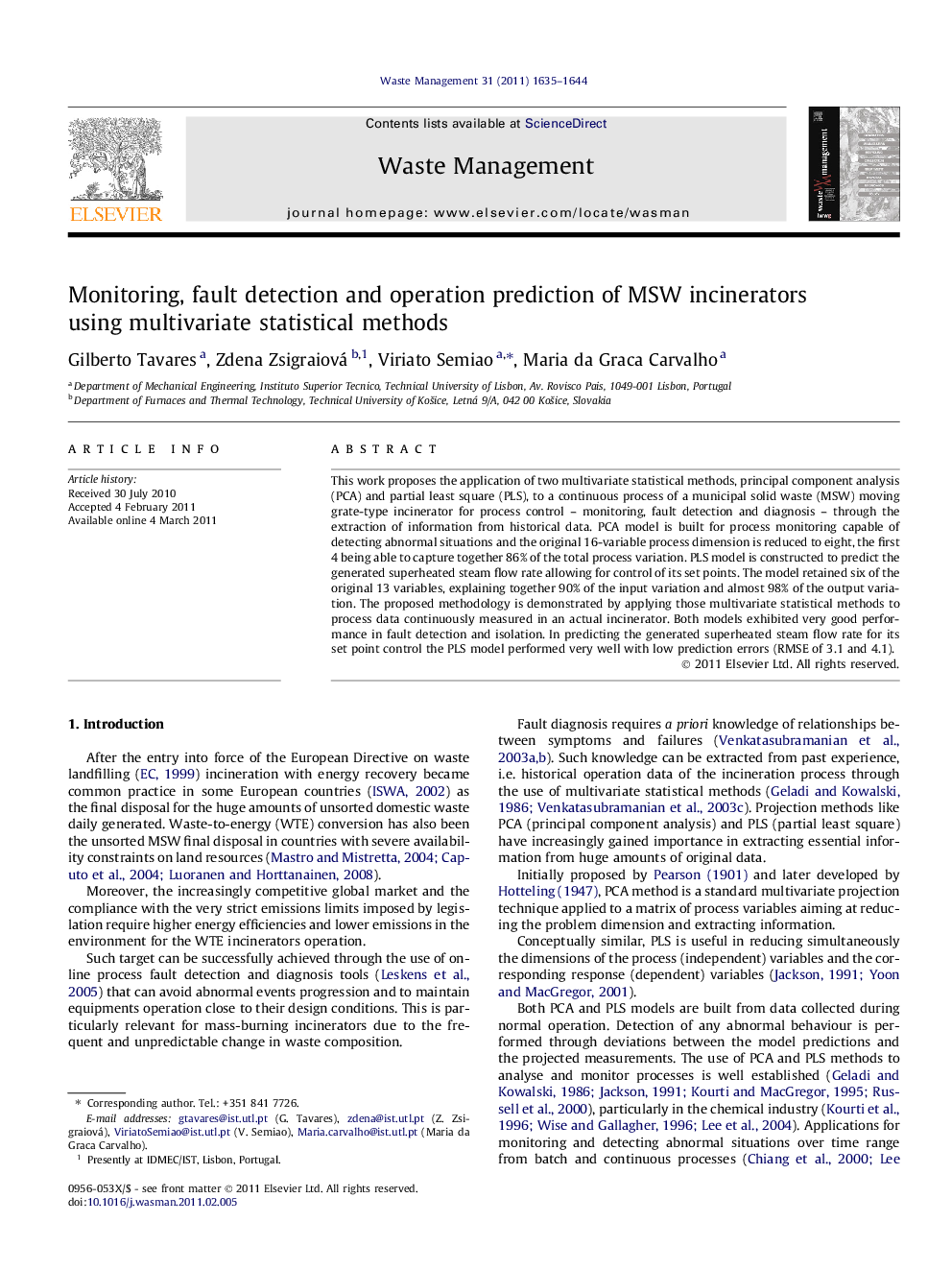| کد مقاله | کد نشریه | سال انتشار | مقاله انگلیسی | نسخه تمام متن |
|---|---|---|---|---|
| 4472502 | 1315070 | 2011 | 10 صفحه PDF | دانلود رایگان |

This work proposes the application of two multivariate statistical methods, principal component analysis (PCA) and partial least square (PLS), to a continuous process of a municipal solid waste (MSW) moving grate-type incinerator for process control – monitoring, fault detection and diagnosis – through the extraction of information from historical data. PCA model is built for process monitoring capable of detecting abnormal situations and the original 16-variable process dimension is reduced to eight, the first 4 being able to capture together 86% of the total process variation. PLS model is constructed to predict the generated superheated steam flow rate allowing for control of its set points. The model retained six of the original 13 variables, explaining together 90% of the input variation and almost 98% of the output variation. The proposed methodology is demonstrated by applying those multivariate statistical methods to process data continuously measured in an actual incinerator. Both models exhibited very good performance in fault detection and isolation. In predicting the generated superheated steam flow rate for its set point control the PLS model performed very well with low prediction errors (RMSE of 3.1 and 4.1).
Research highlights
► PCA/ PLS statistical methods are applied for process control in a MSW incinerator.
► Methodology is demonstrated on continuous data measured in an actual incinerator.
► Used variables, including time-lags, cover most operating aspects and fault types.
► Models yield excellent results in fault analysis and operation prediction.
Journal: Waste Management - Volume 31, Issue 7, July 2011, Pages 1635–1644